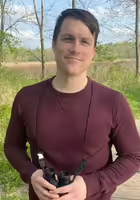Title
If you learn to listen for them...
You will find wildlife everywhere.
Voice of the Wild is a podcast about wildlife and the wild sounds they make. Join Brodie Dunn every Friday to learn a new bird song, frog call, or insect sound.
Voice of the Wild will be taking a holiday break! We'll be back with a new episode on the 9th of January.
Try one of our listener's favorites

Great Horned Owl
The quintessential “whooo” owl call belongs to this fearsome nighttime predator.
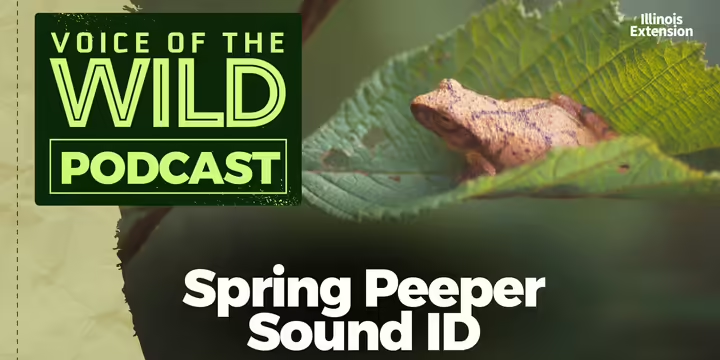
Spring Peeper
The early-spring frog with a sharp birdlike call.
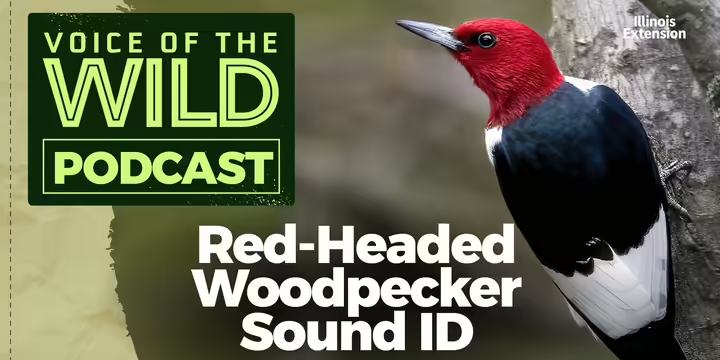
Red-Headed Woodpecker
The only midwestern woodpecker with a head that’s red from nape to throat.
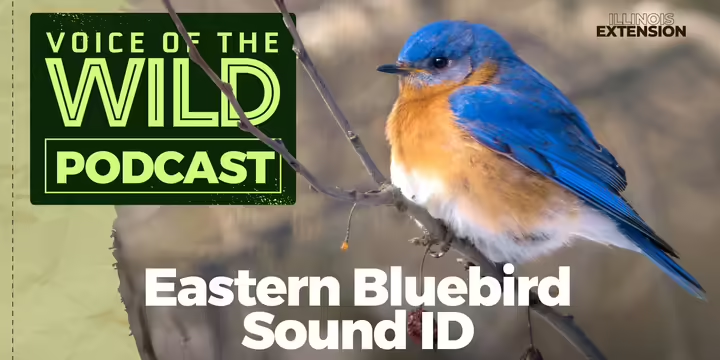
Eastern Bluebird
The beloved Eastern Bluebird is a conservation success story that shows the huge impact of dedicated conservation and stewardship actions.
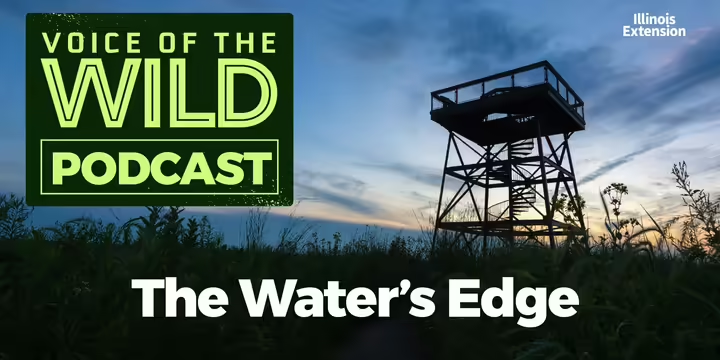
Bonus: The Water's Edge
This bonus episode gives voice to the array of plants and animals which can only be found where the land and the water mingle.
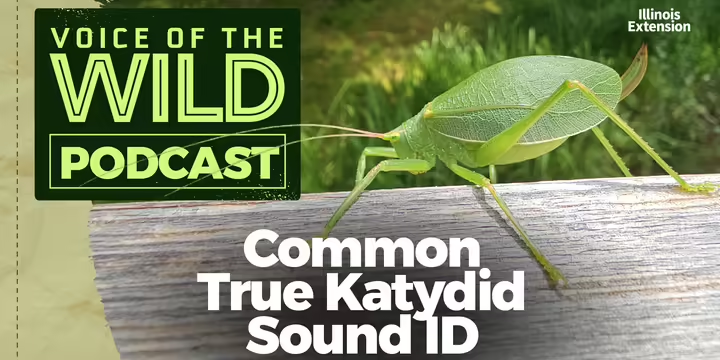
Common True Katydid
This night-singing insect is commonly heard but seldom seen.
Six annual cicada species are common in the Midwest. This episode of the Voice of the Wild podcast can be used as a key to identify them by their sound....
Frequently Asked Questions
On which apps can I find Voice of the Wild?
We’re on Apple Podcasts, Spotify, Overcast, Pocket Casts, Amazon Music, YouTube, Castro, Goodpods, and Castbox. We also have an RSS feed and a regular browser page.
How can I support Voice of the Wild?
Voice of the Wild is a free educational service and the best way to support us is to share it with your friends and family! If you’re feeling particularly generous, subscribe to our newsletter; while we mostly use it to send out episode alerts, we occasionally send out listener surveys that help us refine the show.
Where does Voice of the Wild get its wildlife photography?
We owe many thanks to Dr. Rob Kanter, who granted us permission to use some of his outstanding photography for Voice of the Wild episodes. If Rob doesn’t have a photo that will work with our thumbnail templates we try to find an image on a stock photo site that was taken in Illinois or a nearby state.
Where does Voice of the Wild get its wildlife sounds?
The vast majority of Voice of the Wild's bird songs are licensed from Cornell's Macaulay library. For insects, Wil Hershberger has generously granted us permission to use the recordings on SongsofInsects.com. If we can't find what we're looking for from one of these two sources, we'll search xeno-canto and iNaturalist for amateur recordings submitted under a creative commons license or reach out to our scientist friends for research recordings. If an episode has no source cited for the recording then it was either in the public domain or recorded personally by Brodie.
How are species chosen for each episode?
We choose focal wildlife based on three factors:
- Can the species be heard in Illinois by an everyday person? All species featured on Voice of the Wild must be “hearable” in Illinois at one time or another during a typical year. We prioritize species that are sufficiently common/vocal that most people could find one calling somewhere in their county if they wanted to hear it in-person.
- Do we have a suitable recording? We have access to a few different sound libraries, but our options are nonetheless incomplete. This sometimes limits which wildlife we can feature.
- Will the species make for an interesting episode? All of Illinois’ wildlife are wonderful, but some species serve the podcast better than others. We prioritize species we think have a story to tell and a good voice to tell it with, or are at least persistent and reclusive enough that the episode might solve some mysteries. For example, some of the insects we’ve covered have had very modest songs (Check out the Greater Anglewing and Dog-Day Cicada) but nonetheless made for popular episodes because they put a name to a long-unknown sound in many people’s lives.
What are Voice of the Wild's sources for its wildlife facts?
To ensure the wildlife facts he's learned through personal and professional experience are supported by current literature, Brodie does a brief literature review for each episode and cites any resources he uses in the episode's description. Most episodes lean heavily on field guides and other physical books in Brodie's library, but he also checks Audubon and Cornell's online bird guides, peer-reviewed scientific literature, and previous Extension materials. When necessary he consults with other experts at Extension or reaches out to researchers at the University of Illinois, typically from the Illinois Natural History Survey or the Department of Natural Resources and Environmental Sciences. For bird-focused episodes, Brodie uses the International Ornithologist Union's pronunciation guide for help with Latin Family, Genus, and Species names and eBird's barchart function for migratory arrival and departure dates (these are set to central Illinois, since we have listeners across the state).
The following are the podcast's most cited resources:
- Cornell's AllAboutBirds
- Audubon's Online Field Guide
- Songs of Insects
- Bugguide
- Beadle, D., & Rising, Jim. (2002). Sparrows of the United States and Canada: The photographic guide. Natural World.
- Dobson, C., Kassenbaum, D., Oehmke, D., & Misewicz, M. (2023). Field guide to hotspots and birds in Illinois. Scissortail LLC.
- Dunne, P., Sibley, D., & Sutton, C. (2012). Hawks in flight: The flight identification of North American raptors (2nd ed.). Houghton Mifflin Harcourt.
- Godfrey, M. A., & Kaufman, Kenn. (Directors). (2004). National Audubon Society videoguide to the birds of North America [Video recording]. In Audubon videoguide to 505 birds of North America DVD I & DVD II (Fullscreen.). Godfrey-Stadin Productions.
- Peterson, R. T., & Peterson, V. M. (1980). A field guide to the birds: A completely new guide to all the birds of eastern and central North America (Fourth edition, completely revised and enlarged.). Houghton Mifflin Co.
- Sibley, D. (2016). Sibley birds East: Field guide to birds of eastern North America (2nd ed.). Alfred A. Knopf.
- Stokes, D. W., & Stokes, L. Q. (204 C.E.). Stokes Field Guide to Warblers (2nd ed.). Little, Brown and Company.
- Walton, R. K., & Lawson, R. W. (1989). Birding by Ear: Eastern/Central [Compact Disc]. On Eastern/Central birding by ear. Houghton Mifflin Co.
- Walton, R. K., & Lawson, R. W. (1994). More Birding by Ear: Eastern/Central [Compact Disc]. On Eastern/Central More Birding by Ear. Houghton Mifflin Co.
Where can I learn more wildlife sounds?
Brodie learned wildlife sounds using the following resources, though he warns that most of them are only available on CD (or cassette!)
- Guide to Night-Singing Insects of the Northeast by John Himmelman and Michael DiGiorgio
- Birding by Ear: Eastern/Central by Richard K. Walton and Robert W. Lawson
- More Birding by Ear: Eastern/Central by Richard K. Walton, Robert W. Lawson, and Roger Tory Peterson
- A Field Guide to Bird Songs: Eastern and Central North America by the Cornell Lab of Ornithology
The following few resources are more available online:
- Bird Song Ear Training Guide: Who Cooks for Sam Peabody? Learn to Recognize the Songs of Birds from the Midwest and Northeast States by John Feith
- Songs of Insects
- USGS Amphibian Call Database
- Chicagoland Frog Survey Call Database
- Cornell's Macaulay Library
- Cornell's AllAboutBirds "sounds" pages, e.g. American Robin Sounds
Where can I find an episode I heard on public radio?
Episodes released for use on public radio stations will have already ran as podcast episodes, often in the week prior to the radio broadcast date. Check our homepage for recent episodes. We occasionally use an episode from a previous season to fill in for a holiday break, so you may have to click into previous pages to find the episode you are looking for.
Question? Have a suggestion? Contact us!
